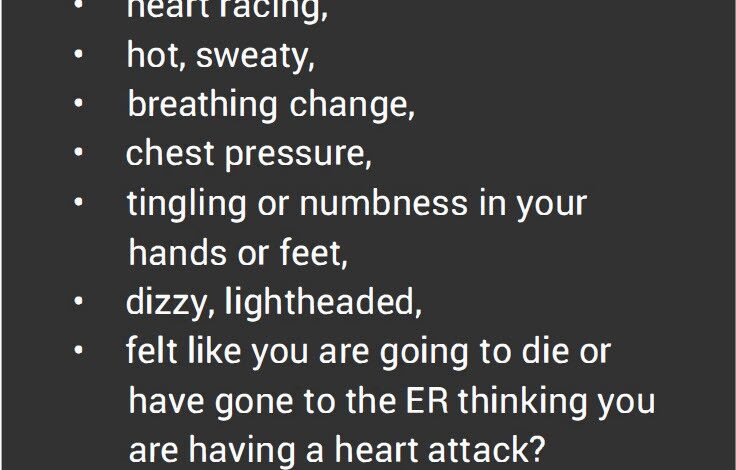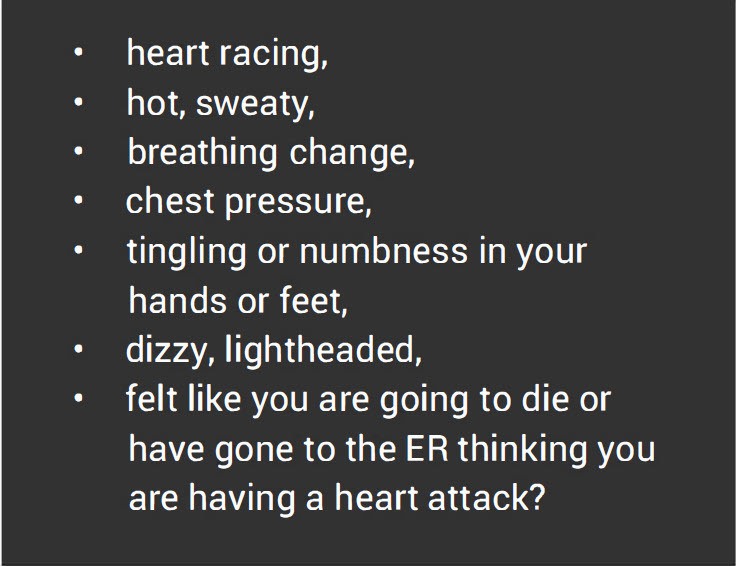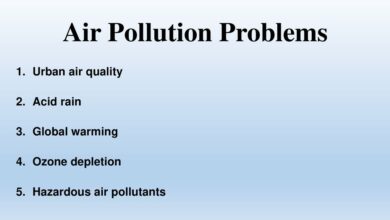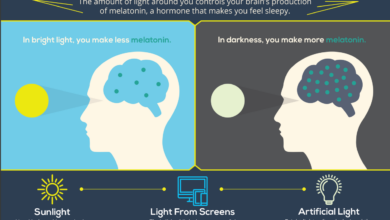
What is a Silent Panic Attack and its Signs?
What is a silent panic attack and its signs? That’s a question many find themselves grappling with, often in silence. Unlike the dramatic, outwardly visible panic attacks often depicted in media, silent panic attacks are internal storms brewing beneath a calm exterior. They’re just as intense, just as debilitating, but far more difficult to identify and understand, leaving sufferers feeling isolated and misunderstood.
This post dives deep into the often-hidden world of silent panic attacks, exploring their symptoms, triggers, and most importantly, how to cope.
We’ll unpack the physiological differences between a silent panic attack and a more outwardly expressed one, examining the subtle yet significant physical and emotional signs. We’ll explore how these attacks can manifest differently in various individuals, highlighting the importance of self-awareness and seeking professional support when needed. Understanding these silent struggles is the first step towards finding peace and managing this often-misunderstood condition.
Defining Silent Panic Attacks
Silent panic attacks, unlike their more outwardly expressive counterparts, are characterized by an internal experience of intense fear and anxiety without the obvious outward manifestations. This makes them incredibly difficult to identify, both for the person experiencing them and for those around them. Understanding the subtle differences is crucial for effective management and support.Silent panic attacks share the same underlying physiological responses as typical panic attacks, but the outward expression is significantly muted or absent.
This doesn’t mean the experience is less intense; rather, the individual may struggle to outwardly express their distress, often appearing calm or controlled on the surface while internally experiencing a whirlwind of fear.
Physiological Responses in Silent Panic Attacks
The physiological responses during a silent panic attack are remarkably similar to those in a typical panic attack, although the intensity might vary. These include rapid heart rate, shortness of breath or hyperventilation, sweating, trembling, dizziness, nausea, and a feeling of impending doom. However, the individual might suppress outward displays of these symptoms, leading to a disconnect between their internal experience and external presentation.
Silent panic attacks are sneaky; you might just feel overwhelmingly anxious without the usual physical symptoms. Understanding these subtle signs is crucial, especially since certain conditions, like high blood pressure which is one of the risk factors that make stroke more dangerous , can mimic silent panic attack symptoms. Recognizing the difference is key to getting the right help, whether it’s managing anxiety or addressing potential stroke risks.
Learning about silent panic attacks and their subtle cues can help you advocate for your health.
For example, someone might feel their heart racing but manage to keep their breathing relatively steady and avoid outwardly trembling. The feeling of impending doom, however, is often intensely felt, despite outward calm.
Triggers for Silent Panic Attacks
Situations that might trigger a silent panic attack can be incredibly diverse and highly individual. What triggers one person may not trigger another. Common triggers can include social situations, such as public speaking or important meetings, stressful work environments, financial pressures, relationship conflicts, or even seemingly minor events that unexpectedly overwhelm the individual. The crucial factor is the individual’s perception of the threat and their capacity to cope with it.
For instance, someone might experience a silent panic attack during a seemingly routine doctor’s appointment if they have underlying anxieties about their health. Similarly, a seemingly minor disagreement with a loved one could trigger a silent panic attack in someone with a history of anxiety or trauma. The triggers are not always large-scale events; often, it’s the accumulation of stress and pressure that leads to the silent onset of a panic attack.
Identifying Signs and Symptoms: What Is A Silent Panic Attack And Its Signs
Silent panic attacks, unlike their more outwardly visible counterparts, can be challenging to identify because the outward signs might be subtle or absent altogether. Understanding the various ways a silent panic attack can manifest is crucial for self-awareness and seeking appropriate support. The symptoms can be categorized into physical, cognitive, and emotional responses, and it’s important to remember that these experiences vary significantly from person to person.
Physical Symptoms of Silent Panic Attacks
The physical manifestations of a silent panic attack can be quite diverse, affecting different bodily systems. Recognizing these symptoms is the first step towards understanding and managing them. The following table organizes common physical symptoms into categories:
| Cardiovascular | Respiratory | Neurological | Gastrointestinal |
|---|---|---|---|
| Rapid heartbeat (tachycardia) | Shortness of breath | Dizziness or lightheadedness | Nausea or upset stomach |
| Chest pain or tightness | Hyperventilation | Tremors or shaking | Diarrhea |
| Increased blood pressure | Feeling of choking or suffocation | Numbness or tingling in extremities | Abdominal pain |
Cognitive and Emotional Symptoms of Silent Panic Attacks
Beyond the physical sensations, silent panic attacks are accompanied by a range of cognitive and emotional disturbances. These internal experiences can be just as debilitating as the physical symptoms.Cognitive symptoms often include feelings of unreality (derealization) or detachment from oneself (depersonalization). Individuals might experience difficulty concentrating, memory problems, or a sense of impending doom or catastrophe. Intrusive thoughts, racing thoughts, or a feeling of overwhelming anxiety are also common.Emotionally, silent panic attacks can manifest as intense fear, anxiety, terror, or a sense of overwhelming helplessness.
Silent panic attacks are sneaky; you might feel the physical symptoms like a racing heart or shortness of breath, but outwardly appear calm. It’s a strange contrast, like reading about groundbreaking medical news, such as the fda approves clinical trials for pig kidney transplants in humans , while internally experiencing intense anxiety. Understanding the subtle signs of a silent panic attack is crucial for self-care and seeking help when needed.
The key is recognizing those physical sensations even without the outward display of panic.
These feelings can be accompanied by feelings of dread, panic, or a sense of losing control. The intensity of these emotions can vary widely, but they are a significant part of the silent panic attack experience.
Variability of Symptoms
It’s crucial to remember that the experience of a silent panic attack is highly individual. What one person experiences might be vastly different from another’s experience. For instance, one individual might primarily experience intense gastrointestinal distress, while another might predominantly exhibit neurological symptoms like tremors or dizziness. Some individuals might primarily experience cognitive symptoms such as difficulty concentrating or overwhelming fear, with minimal physical manifestations.
The intensity and combination of symptoms can also vary depending on factors such as stress levels, triggers, and individual predisposition. This variability highlights the importance of self-awareness and seeking professional help to accurately identify and manage these episodes.
Differentiating Silent Panic Attacks from Other Conditions

Source: anxietysimplified.com
Silent panic attacks can be tricky to identify because they often lack the dramatic outward signs of a typical panic attack. This makes it crucial to understand how they differ from other conditions, preventing misdiagnosis and ensuring appropriate support. The subtle nature of silent panic attacks means they can easily be mistaken for other issues, both mental and physical.Silent panic attacks share similarities with anxiety attacks, but key differences exist.
While both involve intense fear and discomfort, silent panic attacks manifest internally, without the overt physical symptoms like hyperventilation or trembling often seen in a standard panic attack. The internal experience can be just as intense, if not more so, due to the lack of outward expression and potential for feeling isolated in the experience. Furthermore, silent panic attacks can be triggered by seemingly minor stressors, whereas anxiety attacks may be linked to more immediately identifiable triggers.
Silent Panic Attacks Versus Anxiety Attacks
Anxiety attacks typically present with a range of noticeable physical symptoms, such as rapid heartbeat, shortness of breath, sweating, trembling, and chest pain. These are often accompanied by intense feelings of fear, dread, and impending doom. Silent panic attacks, however, may present with similar feelings of intense fear and dread but lack the pronounced physical manifestations. The internal experience can be equally distressing, often characterized by a sense of overwhelming unease, a feeling of impending doom or catastrophe, and intense internal tension.
The key differentiator is the lack of overt physical symptoms. Someone experiencing a silent panic attack might appear calm on the outside, while internally experiencing a level of distress comparable to a full-blown panic attack.
Silent Panic Attacks Versus Other Conditions
Several conditions can mimic the symptoms of a silent panic attack, making accurate diagnosis challenging. For example, intense feelings of anxiety and unease could be mistaken for depression or generalized anxiety disorder. Similarly, physical symptoms like dizziness or heart palpitations, sometimes present in silent panic attacks, could be attributed to other medical conditions, such as cardiovascular issues or inner ear problems.
The subtle nature of the presentation underscores the importance of a thorough evaluation by a healthcare professional to rule out other potential causes.
Distinguishing Silent Panic Attacks from Medical Emergencies
It’s crucial to differentiate silent panic attacks from genuine medical emergencies. While a silent panic attack might involve symptoms like chest pain or dizziness, these symptoms are usually not indicative of a life-threatening condition. However, if chest pain is severe, persistent, or accompanied by other symptoms such as shortness of breath or radiating pain, it warrants immediate medical attention as it could indicate a heart attack or other serious cardiovascular event.
Silent panic attacks are sneaky; you might feel numb, shaky, or have a racing heart without the obvious outward signs of a full-blown panic attack. Understanding nutrition is key to managing anxiety, and that’s why I found this article on are women and men receptive of different types of food and game changing superfoods for women so interesting.
Proper diet could influence how our bodies react to stress, potentially impacting the frequency and intensity of silent panic attacks. It’s all interconnected, right?
Similarly, sudden, severe dizziness or loss of consciousness could signify a stroke or other neurological emergency. If in doubt, always seek immediate medical help. A healthcare professional can accurately assess the situation and determine the appropriate course of action.
Managing and Coping with Silent Panic Attacks
Silent panic attacks, while less outwardly dramatic than their more visible counterparts, can be incredibly debilitating. Understanding that you’re not alone and that effective coping mechanisms exist is the first step towards managing these episodes and reclaiming your sense of control. Learning to recognize your triggers and developing strategies to manage your anxiety is crucial for long-term well-being.
Effective management of silent panic attacks involves a multi-pronged approach combining self-help techniques with, in many cases, professional support. The key is to develop a personalized plan that addresses your specific needs and triggers. Remember, consistency and patience are vital; finding what works best for you may take time and experimentation.
Coping Mechanisms for Silent Panic Attacks
Several coping mechanisms can help you manage the symptoms of a silent panic attack. These techniques aim to ground you in the present moment, regulate your breathing, and calm your nervous system. It’s important to experiment to find what works best for you.
- Deep Breathing Exercises: Slow, deep breaths can help regulate your heart rate and reduce feelings of panic. Try inhaling deeply through your nose, holding for a few seconds, and exhaling slowly through your mouth. Focus on the sensation of the breath entering and leaving your body.
- Progressive Muscle Relaxation: Systematically tense and release different muscle groups in your body. This technique helps release physical tension often associated with anxiety. Starting with your toes and working your way up to your head, tense each muscle group for a few seconds, then release, noticing the difference in tension.
- Mindfulness and Meditation: Practicing mindfulness helps you focus on the present moment, reducing rumination about past anxieties or worries about the future. Even short meditation sessions can be beneficial.
- Grounding Techniques: Engage your senses to bring yourself back to the present. Notice five things you can see, four things you can touch, three things you can hear, two things you can smell, and one thing you can taste. This helps shift your focus away from anxious thoughts.
- Physical Activity: Exercise releases endorphins, which have mood-boosting effects. Even a short walk can make a difference.
A Step-by-Step Guide to Self-Help Techniques
Implementing these self-help strategies consistently can significantly improve your ability to manage silent panic attacks. Remember to be patient with yourself; it takes time and practice to develop these skills.
- Identify Your Triggers: Keep a journal to track your panic attacks, noting the time, location, and any preceding events or thoughts. Identifying patterns can help you anticipate and prepare for future episodes.
- Practice Relaxation Techniques Daily: Regular practice of deep breathing, progressive muscle relaxation, or mindfulness meditation strengthens your ability to use these techniques effectively during a panic attack.
- Develop a Personalized Coping Plan: Based on your identified triggers and preferred coping mechanisms, create a written plan outlining specific steps to take when you feel a panic attack approaching.
- Create a Safe Space: Designate a quiet, comfortable space in your home where you can retreat to when feeling anxious. Make it a calming environment.
- Maintain a Healthy Lifestyle: Prioritize regular sleep, a balanced diet, and regular exercise to support your mental and physical well-being.
Strategies for Seeking Professional Help
While self-help techniques are valuable, professional support can be crucial for managing severe or persistent silent panic attacks. Don’t hesitate to reach out for help if you’re struggling.
Seeking professional help involves several steps:
- Consult Your Doctor: Your primary care physician can provide an initial assessment and refer you to a mental health professional.
- Find a Therapist: Therapists specializing in anxiety disorders, such as cognitive behavioral therapists (CBT) or other qualified professionals, can provide evidence-based treatments.
- Explore Different Treatment Options: Therapy may involve various techniques like CBT, exposure therapy, or medication management. Your therapist will help you determine the most appropriate approach.
- Be Patient and Persistent: Therapy takes time and effort. It’s important to be patient with the process and work collaboratively with your therapist.
- Build a Support System: Lean on friends, family, or support groups for additional emotional support.
Illustrating Silent Panic Attacks
Understanding a silent panic attack can be challenging because, unlike a typical panic attack, it lacks the outward display of intense emotion. It’s a hidden struggle, often misinterpreted as something else entirely. Let’s explore a specific scenario to illuminate this internal turmoil.Sarah, a high-achieving lawyer, found herself in a seemingly ordinary board meeting. Externally, she appeared calm and collected, meticulously reviewing documents and participating in discussions.
Internally, however, a silent panic attack was brewing.
A Silent Panic Attack Scenario, What is a silent panic attack and its signs
The meeting began innocuously enough. However, a subtle shift in the room’s energy – perhaps a critical comment from her boss – triggered a cascade of internal distress. Initially, she felt a tightening in her chest, a sensation she initially dismissed as indigestion. This was quickly followed by a rapid heartbeat, barely perceptible under the calm exterior she maintained.
Her breath grew shallow, almost imperceptible, as she focused intensely on controlling her outward composure. The physical sensations intensified, but she successfully suppressed any outward manifestation of panic.
Sensory Perceptions and Thought Processes
Sarah’s sensory perceptions became heightened. The hum of the air conditioning felt deafening, the rustling of papers an unbearable cacophony. Her vision blurred slightly, and she felt a detachment from the conversation, as if observing it from a distance. Her thoughts raced; self-criticism dominated – “You’re going to fail,” “You’re not good enough,” “Everyone will see through you.” This internal dialogue, rapid and intense, was a stark contrast to her outwardly calm demeanor.
She desperately clung to the thought of escaping the meeting, imagining the relief of being alone. This mental escape became her only solace, a silent refuge from the escalating internal storm.
Physical Sensations During a Silent Panic Attack
The physical sensations were intense and prolonged. The initial tightness in her chest evolved into a crushing pressure, making it difficult to breathe deeply. Her heart pounded relentlessly against her ribs, a drumbeat of fear that she struggled to ignore. Her hands and feet became clammy, and a wave of nausea washed over her. This physical discomfort lasted for approximately 20 minutes, a significant duration during which she maintained a composed external presentation.
The intensity was such that she felt disconnected from her body, as if observing the physical symptoms as a detached observer. The feeling of impending doom persisted throughout, though the physical symptoms eventually subsided slowly.
Final Thoughts
Silent panic attacks, while invisible to the outside world, are a very real and intensely challenging experience. Remember, understanding the signs, learning coping mechanisms, and seeking professional help when necessary are crucial steps in managing these attacks. You’re not alone in this, and there’s hope for finding relief and regaining control. Take the time to prioritize your mental health, and remember that seeking help is a sign of strength, not weakness.
Start small, build self-awareness, and reach out for support – your journey to better mental well-being starts now.
FAQ Compilation
Can silent panic attacks happen during sleep?
While less common, yes. They can manifest as disturbing dreams or sudden awakenings with intense anxiety.
How long do silent panic attacks typically last?
They can range from a few minutes to an hour or more. The duration varies greatly from person to person.
Are silent panic attacks more common in men or women?
While research is ongoing, there’s no conclusive evidence suggesting a significant difference in prevalence between genders.
Can medication help with silent panic attacks?
Yes, certain medications, such as antidepressants and anti-anxiety medications, can be effective in managing the symptoms of panic attacks. Always consult a doctor or psychiatrist for personalized advice.





